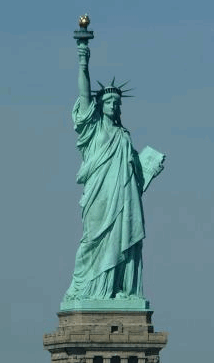Wang was a post-doc in mechanical engineering at Northwestern. We had become partners in a new Internet venture -- a "global online marketplace for metalcasting" -- Castingtrade.com! He had come from one of the most prestigious universities in China, and he was active in organizing Chinese students at universities in the Chicago area.
 |
| Artist Zhang Huan with Chinese character meaning "no". |
First, China's loss was America's gain. Our country had always benefitted from being a magnet to the best and the brightest. More than anything else, America's competitive advantage in the world lies in the fact that we will always win the "war for talent."
Second, that equilibrium would eventually re-establish itself. Once China's leaders woke up and smelled the coffee -- and realized that they were suffering a debilitating brain drain -- they would realize they had no choice but to opt for political liberalization. (According to this theory, the best way for the United States to help China was to continue bleeding them of their best and brightest at an accelerating pace!)
Wang smiled and said, "That's good as far as it goes, but there's one thing you don't understand. What you are calling "the best and the brightest," the leaders in China call "troublemakers." A hundred thousand Ph.D.'s stay behind in the U.S.? Two hundred thousand? A million? Fine! Let them! There's more where that came from! China's got nothing if not people!"
China's conflict with Google -- in fact, with the entire Internet -- is turning a powerful magnifying glass on this phenomenon. Maybe Beijing will continue to "win." I shudder, however, to think what victory looks like . . . .
Related posts
What does it mean when we see the signs of protest written on the human body?
(See The New Face of Social Protest In Hong Kong )
(See What is the US Peace and Justice Movement Doing for Dissidents in China?)
 Doesn't politics and diplomacy call for the deft engagement with figures such as Ilham Tohti, in order to find breakthroughs that accommodate everyone, rather than a scorched earth approach? One answer that comes to mind: power holders in China are much more familiar with other ideas about how to "send a message."
Doesn't politics and diplomacy call for the deft engagement with figures such as Ilham Tohti, in order to find breakthroughs that accommodate everyone, rather than a scorched earth approach? One answer that comes to mind: power holders in China are much more familiar with other ideas about how to "send a message."(See CHINA: Where Minority Nostalgia is One Thing, Minority POLITICS Quite Another )
.jpg)




































